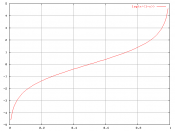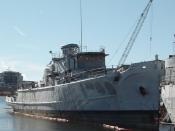Aman Gopal (A005)
Determinants of Scrapping Rates for Post-War Vintage Automobiles
Part I: Introduction
The paper, published in 1977 examines the behavior of scrapping rates for domestically manufactured
postwar vintage automobiles in the United States.
Scrapping of an automobile is a part of the overall problem of capital management which involves a
purchase decision, maintenance and repair decisions and finally scrapping of the automobile which may
coincide with a replacement decision.
Though an automobile may pass through a sequence of owners in its life, the usage pattern of the
vehicle remains consistent regardless of the number of owners. So for the sake of simplicity, the author
assumes that the life cycle of the car can be determined as if a single decision maker is involved.
The factors affecting the economic decision to scrap an automobile involve stochastic elements so that
we observe some scrapping to occur at all ages following a pattern that is quite similar for all makes and
vintages.
The model of scrapping behavior that is constructed in the second section takes these features into
account and leads to an econometric framework that predicts the probability that a car of given make,
vintage, and age will be scrapped.
Part II: The Model
The decision to scrap an automobile may be captured by a model that allows repairing the vehicle to be
an alternative for scrapping the vehicle.
When the vehicle is designed, the manufacturer determines features that affect:
i) Pattern of breakdowns
ii) Nature of repairs
These features can be simplified into a single feature, the durability parameter (δ) In each time period, a car would suffer a breakdown which would require a repair to restore the service flow. The size of the repair required is a non-negative random variable whose distribution depends on:
i) a: The...


